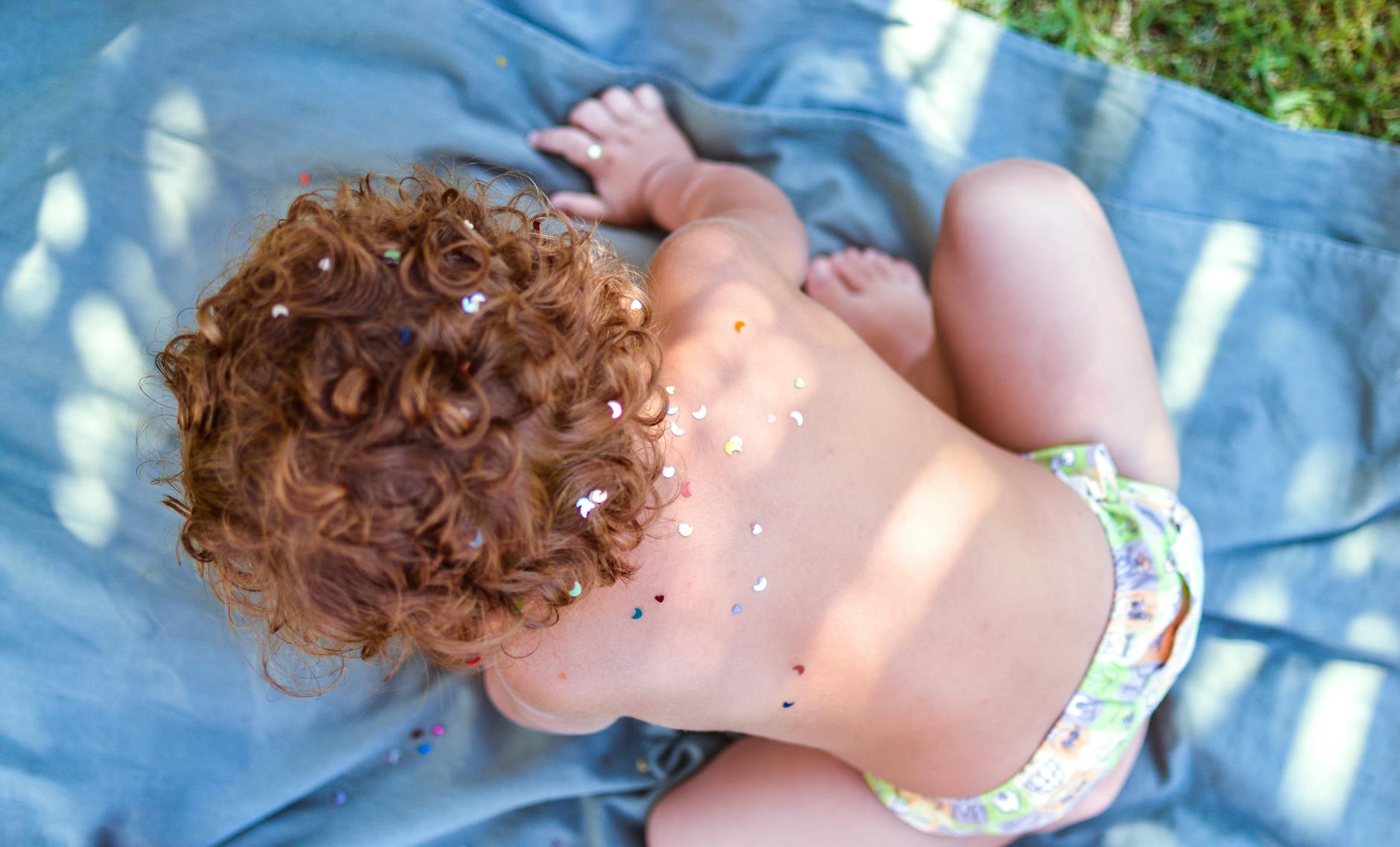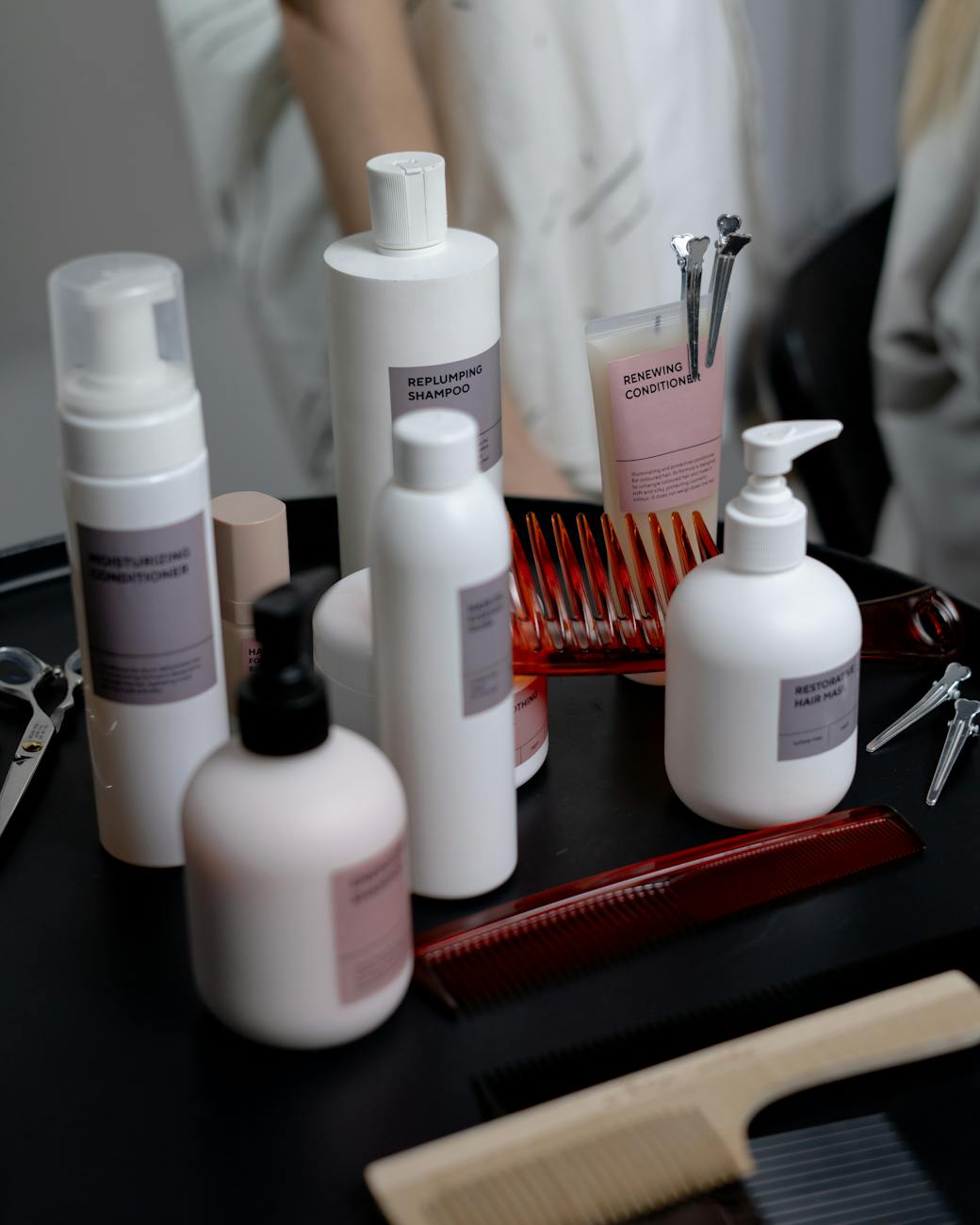If you’ve ever stood in the bathroom with a detangling brush in one hand, a crying toddler in the other, and a YouTube tutorial playing at 0.25x speed, wondering what went wrong — this guide is for you.
Let’s not overcomplicate things—this isn’t a ten-step ritual passed down from the Curly Gods atop Mount Coily. This is the Quick Curly Kid Method: part common sense, part street wisdom, and 100% aimed at keeping your little one’s curls poppin’ without a meltdown (from you or the kid).
We’re talking low-fuss, high-respect care for textured hair that’s still learning its own vibe. It’s not about perfection—it’s about preservation, hydration, and letting those curls live their best life, one detangle at a time. Buckle up, grab that spray bottle, and trust the process.
Let’s get started.
Chapter 1: Know Thy Curl: What’s Growing on Their Head?
Chapter 2: Ditch the Sulfates
Chapter 3: How Often Should You Wash?
Chapter 4: Conditioner Is the Real Detangling Hero
Chapter 5: Chapter 5: Styling Without Screaming
Chapter 6: Drying Without the Frizz
Chapter 7: Nighttime = Curl Protection Hour
Chapter 8: What Products To Use?
Chapter 9: Representation & Respect
Chapter 10: Teach Them To Love It Early
Chapter 1: Know Thy Curl: What’s Growing on Their Head?
Know Thy Curl
Every curl is a fingerprint. No two heads are the same—even on twins.
Curl Types:
- 2A–2C: Wavy, like soft spaghetti. Gentle bends, beachy vibes.
- 3A–3C: Curly, like ringlets, corkscrews, spirals and springy ringlets.
- 4A–4C: Coily/Kinky, like tiny zigzag curls or spirals — tight coils, lots of volume.
Pro Tip: Don’t obsess. Kids’ hair changes! Focus more on what it needs than what number it is.
Porosity: How thirsty is your kid’s hair?
- Low: Cuticle lies flat, repels moisture. Water beads up. Hard to absorb moisture. Needs moisture applied with heat.
- Normal: Absorbs and retains moisture well.
- High: Soaks up product fast but dries out easily. Needs lots of TLC.
Quick Test: Drop a strand in a glass of water.
- If it sinks = high porosity.
- If it floats = low porosity.
Density: How Much Hair Is Actually on Their Head?
Here’s how to break it down:
Low Density (a.k.a. Less Hair Per Square Inch)
You can easily see your child’s scalp when the hair is parted.
💡 Pro Tip: Light, liquidy leave-ins and mousses are your friend. Too much cream can make it look limp.
Medium Density
Scalp is visible only when parted, not through the hair itself.
💡 Pro Tip: You’ve got flexibility here. Experiment to see what works — just don’t assume one-size-fits-all.
High Density (a.k.a. Hair for Days)
We’re talking thick, lush, full-on volume.
💡 Pro Tip: Heavier creams, curl butters, and defining gels can help clump and define curls without puffing out. Sectioning is essential — don’t try to tackle it all at once.
Chapter 2: Ditch the Sulfates.
Kids with curly hair do not need to shampoo every day. In fact, doing so strips moisture, leaving curls dry and frizzy.
- Use tear-free, sulfate-free shampoo 1–2x/week.
- Co-wash with conditioner mid-week if dry.
Ingredients to Love
Aloe vera, glycerin, chamomile, coconut oil, shea butter.
Ingredients to Avoid
That pastel-coloured, cartoon-covered bottle may say tear-free, but check the label. If it’s got:
Drying alcohols (think alcohol denat, ethanol) — brittle-city
Sulfates (like sodium lauryl sulfate) — strip moisture
Parabens — questionable stuff, often unnecessary
- Sodium Lauryl Sulfate
- Ammonium Lauryl Sulfate
- Alcohols (like SD alcohol, not the good fatty ones)
Chapter 3: How Often Should You Wash?
Less is More:
Over-washing = dry, frizzy curls.
🛁 One Size Does Not Fit All
Curly routines depend on:
- Age
- Curl type
- Lifestyle (Are they rolling in mud or just drawing on the walls?)
- Toddlers (1–3): Once a week max
- Once a week is enough. Seriously.
- Co-wash (conditioner-only wash) or a gentle cleanser with no sulfates.
- Keep it fun: sing, splash, let them “help.”
- Young kids (4–7): Every 5–7 days
- 1–2 washes per week. Add more if swimming or sweating lots.
- Use a sulfate-free shampoo every other wash.
- Alternate with co-washing if the scalp isn’t grimy.
- Tweens (8–12): Every 4–6 days (or as needed for scalp)
- They’re experimenting, hormonal, maybe even self-conscious. That’s normal.
- Let them learn what feels good for their scalp.
- Introduce clarifying shampoo only once a month if product buildup is real.
- Teach about moisture balance—too much washing = thirsty hair.
Routine:
- Wet hair with warm water.
- Use a quarter-size amount of shampoo at the roots.
- Rinse gently.
Pro Tip: Use a tear-free, sulfate-free shampoo to keep their curls hydrated.
Chapter 4: Conditioner Is the Real Detangling Hero
It’s a must for healthy, hydrated, easy-to-tame curls.
Co-washing (using conditioner to cleanse) is perfect for dry curls in between shampoo days.
🧴Pro tip: Always follow shampoo with a deep, hydrating conditioner. Shampoo opens the door. Conditioner brings the good stuff in.
🧰 Detangling Tools + Tricks
Let’s talk weapons of choice. Use wisely.
✅ What Works:
- Fingers — best for little ones with tender scalps
- Wide-tooth comb — classic and gentle
- Detangling brush
- Spray bottle — water is your co-pilot
- Leave-in conditioner or detangling spray — especially if you’re working on dry-ish hair between washes
❌ What Doesn’t:
- Fine-tooth combs (save it for nits)
- Brushes made for straight hair (unless/ you enjoy the sound of sobbing)
- Dry detangling (unless your child is made of steel and lies perfectly still)
🛁 Step-by-Step: Wash Day Detangle Routine
Let’s go full walkthrough. Save, screenshot, tattoo on your arm if needed.
- Start in the bath or shower. Wet hair thoroughly.
- Apply a generous amount of conditioner. Like, don’t hold back. Think lasagne portion.
- Section the hair. Four to six parts. Use clips, scrunchies, whatever’s handy.
- Work section by section:
- Start from the ends, work your way up.
- Use fingers first, then your chosen tool.
- Talk or sing. This distracts and comforts. Plus, it’s less weird than bribing with biscuits.
- Rinse gently, or leave a little in if it’s a leave-in kind.
- Celebrate. You did it.
👶 Detangling for Toddlers
- Use a soft brush or just your fingers.
- Make it a game. Let them detangle a doll while you do theirs.
- Keep a towel handy. For you, not them. You’ll sweat.
Chapter 5: Styling Without Screaming
Let’s be real: Styling kids’ hair can be a battle. But it doesn’t have to be!
💦 Start with Moisture
Dry curls = frizz and drama. You don’t need a 12-step product lineup — just some basic hydration.
🧴 The Go-To Trio:
- Leave-in conditioner
Light enough for daily use, gives curls softness and moisture. - Curl cream
Adds definition. Pick one based on hair thickness — thicker creams for thicker textures. - Gel or custard (optional)
For hold and frizz control. Look for flexible-hold, alcohol-free options.
✨ Pro Tip: Apply on damp hair. Not soaking wet, not bone dry. Think “freshly towel-dried, like a warm dumpling.”
👧🏽 Easy Everyday Styles That Actually Work
You don’t need a braiding license or a third arm. These basics will get your kid out the door looking fresh.
(Ages 2+)
- Spritz hair with water + leave-in
- Brush edges gently with a soft bristle brush
- Gather hair loosely at the top or back
- Use a snag-free band (no rubber!) or a puff cuff
Wash ‘n Go – Styling Routine in 5 Simple Steps:
Fluff roots with fingers once dry
Define curls with a leave-in and gel or custard
Use fingers or a Denman brush to shape
Let air-dry or diffuse on low
⏰ Morning Routine Hacks
Time is fake in the mornings. Here’s how to fake having it together:
- Pre-style the night before. Twist or braid slightly damp hair before bed.
- Use a satin bonnet or pillowcase. Helps preserve styles overnight.
- Refresh in the AM. Spray bottle + a little leave-in + fingers to revive curls.
Chapter 6: Drying Without the Frizz
Wet curls are fragile. The way you dry them can make or break the style — literally.
🚫 Say No To:
- Terrycloth towels (aka frizz bombs)
- Aggressive rubbing (just… don’t)
✅ Do This Instead:
- Use a microfiber towel or 100% cotton T-shirt
- Blot and scrunch gently — no wringing!
- Air-dry whenever possible — or diffuse on low heat
- Use a diffuser attachment
- Set to low speed + low heat = less frizz, more definition
Chapter 7: Nighttime = Curl Protection Hour
Satin and silk are your hair’s best friends — they reduce friction and preserve moisture.
- Satin bonnet – essential for toddlers and beyond
- Satin pillowcase – backup plan if bonnets “mysteriously disappear”
- Satin sleep cap with strap – for wriggly kids or wild sleepers
Bonus Tip: Pillowcase and bonnet. Like double insurance. For when they yank one off mid-dream and end up upside-down with glitter on their cheeks.
Tips for Bonnet Haters:
- Let them choose the bonnet.
- Start with short wear times.
- Try satin-lined hoodies for bedtime story time.
Chapter 8: What Products To Use?
Don’t hoard! Kids’ curls need simple, lightweight products.
🧪 Product Types, Demystified
Let’s break down the main players on the curly kid stage:
- Leave-In Conditioner: Lightweight hydration. Great for daily refreshes or post-wash detangling.
- Curl Cream: Adds moisture, definition, and soft hold. Pick lighter creams for finer curls, richer ones for thick/coily textures.
- Gel: Locks in shape and moisture. Look for “flaxseed gel” or “aloe-based” for gentler options.
- Detangler Spray: Can be a lifesaver, but watch for alcohol content.
- Oil/Serum: Great as a final step to seal in moisture and add shine. Use sparingly — this ain’t salad dressing.
Must-Haves:
- Gentle shampoo (no sulfates!)
- Moisturizing conditioner
- Leave-in/detangler
- Curl cream or light gel
Try This:
- Cantu Kids Leave-In Conditioner
- SheaMoisture Kids Curl Butter
- Aussie Miracle Curls
- TGIN Butter Cream (for older kids)
DIY Options That Actually Work
Want to play kitchen chemist? These are easy, safe, and often super effective:
- Aloe Vera Juice + Water + a few drops of oil = homemade refresh spray
- Marshmallow root tea rinse = slip city (if your kid’s into herbal smells)
- Whipped shea butter + coconut oil = rich styling balm (a little goes a long way)
Final Word
“Curly hair isn’t a problem to fix — it’s a crown, and honoring it is honoring identity.”
You are doing something powerful—teaching your child that their natural self is enough, beautiful, and worth caring for.
You’ve got this. Now go hydrate those curls like they just crossed the desert!



